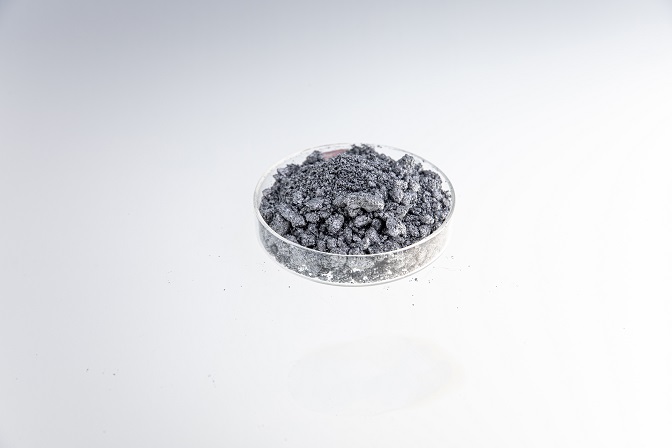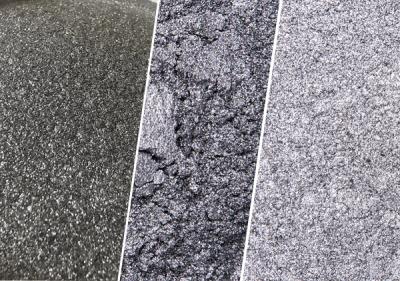Resin - coated aluminium paste is a specialized material that combines the unique properties of aluminium with the beneficial characteristics of a resin coating. This combination results in a product with enhanced performance and a wide range of applications.

At the core of resin - coated aluminium paste are the aluminium particles. These particles are usually very fine, with sizes ranging from a few micrometers to tens of micrometers. The aluminium used can be of different grades, but high - purity aluminium is often preferred for better quality. The shape of the particles can also vary, with spherical or flake - like shapes being common. The nature of these aluminium particles gives the paste its metallic luster and certain physical properties related to light reflection and conductivity.
The resin coating is a crucial component that envelops the aluminium particles. The resin used can be one of several types, such as acrylic resins, epoxy resins, or polyurethane resins. Each type of resin imparts different properties to the paste. For example, acrylic resins are known for their good weatherability and color stability, while epoxy resins offer excellent adhesion and chemical resistance. The resin coating serves multiple purposes. It protects the aluminium particles from oxidation, which can cause deterioration of the metallic properties over time. It also improves the dispersion of the aluminium particles in various media, making it easier to incorporate the paste into different systems like paints, inks, or plastics.
The production of resin - coated aluminium paste involves several key steps. First, the aluminium particles are prepared through processes like atomization or milling to achieve the desired particle size and shape. Then, the selected resin is dissolved in an appropriate solvent to form a resin solution. The aluminium particles are then introduced into the resin solution, and through mechanical agitation or other specialized techniques, the resin is evenly coated onto the particle surfaces. After coating, the solvent is usually removed through evaporation or other drying methods to obtain the final resin - coated aluminium paste product.
Resin - coated aluminium paste offers a beautiful metallic appearance. The resin coating can enhance the reflectivity and luster of the aluminium particles, giving a shiny and attractive finish. This makes it highly desirable in applications where visual appeal is important, such as in decorative paints, automotive coatings, and high - end packaging materials. The ability to create different visual effects, from a smooth mirror - like finish to a glittery or textured look, depends on the type of resin and the application method.
The resin coating provides enhanced stability to the aluminium paste. By protecting the aluminium particles from oxidation, the paste can maintain its metallic properties for a longer period. This is crucial in applications where the product may be exposed to environmental factors such as air, moisture, or sunlight. The stability also ensures that the paste has a longer shelf - life, reducing the risk of quality degradation during storage.
As mentioned earlier, the resin coating improves the dispersion of the aluminium particles. In paint formulations, for example, better dispersion leads to a more uniform color and finish. It prevents the aluminium particles from clumping together, resulting in a smoother application and a more consistent appearance in the final coated product. This property is also valuable in inks and plastics, where a homogeneous distribution of the aluminium paste is essential for achieving the desired visual and physical properties.
Resin - coated aluminium paste has improved compatibility with various systems. The resin coating can be tailored to match the characteristics of the medium into which the paste is incorporated. For instance, in water - based paints, a water - soluble resin can be used to ensure good compatibility with the water - based system. This allows for easier integration of the paste into different products without causing issues such as separation or incompatibility.
In the paint and coating industry, resin - coated aluminium paste is widely used. It can be used in architectural paints to create decorative finishes on building exteriors and interiors. In automotive coatings, it adds a luxurious metallic look to cars and also provides some protection against corrosion and UV damage. Industrial coatings also benefit from its use, as it can improve the durability and appearance of equipment and machinery.
In the printing ink industry, resin - coated aluminium paste is used to produce metallic inks. These inks are used for printing on various substrates, such as paper, plastic, and metal. The metallic effect achieved with the paste - based inks makes printed materials more eye - catching and attractive. This is commonly seen in packaging labels, greeting cards, and high - end publications.
When incorporated into plastic materials, resin - coated aluminium paste can give plastics a metallic appearance. This is used in the production of plastic products ranging from toys and household items to automotive interior parts. The addition of the paste not only improves the aesthetic appeal but can also have functional benefits, such as improved heat resistance or mechanical properties in some cases.
In conclusion, resin - coated aluminium paste is a versatile and valuable material that combines the advantages of aluminium and resin. Its unique properties make it an essential ingredient in many industries, enabling the creation of products with enhanced visual appeal, stability, and performance.




